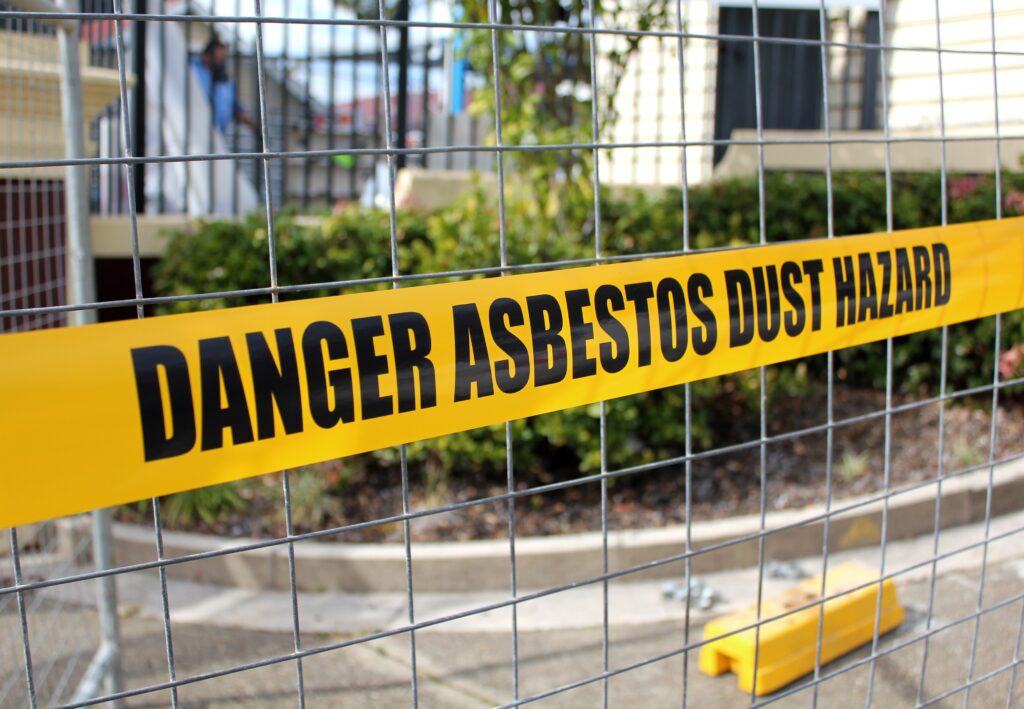
Historical Context of Asbestos Use
Asbestos has been around for centuries, with its use peaking in the mid-20th century. It was prized for its durability and heat resistance, making it a go-to material in construction, shipbuilding, and even household products. Back then, no one really knew how dangerous it was. Over time, though, research began to link asbestos exposure to severe health problems. This set off a wave of regulations worldwide as countries started to recognize the risks.
Health Risks Associated With Asbestos
The health risks of asbestos are no joke. Prolonged exposure can lead to diseases like asbestosis, lung cancer, and mesothelioma—a particularly aggressive cancer. What makes asbestos so dangerous is how its tiny fibers can become airborne and lodge in the lungs. Once inhaled, these fibers can stay in the body for years, causing long-term damage. The scary part? Symptoms often don’t show up until decades later, making early detection almost impossible.
International Efforts to Ban Asbestos
Globally, countries have taken very different approaches to asbestos regulation. Some, like Australia and the European Union, have implemented total bans. Others have restricted its use but stopped short of a full ban. Organizations like the World Health Organization and the International Labor Organization have been pushing for a worldwide ban, emphasizing the need for a unified effort to eliminate asbestos-related diseases. Still, challenges remain, especially in developing nations where resources for enforcement are limited. It’s a complex issue, but progress is being made.
United States Policies on Asbestos in Buildings
EPA Guidelines for Asbestos Management
The Environmental Protection Agency (EPA) plays a central role in regulating asbestos in the U.S. Their guidelines aim to minimize exposure risks, particularly in older buildings where asbestos was commonly used. These rules focus on safe handling, removal, and disposal practices to protect public health. Building owners and contractors are required to follow strict protocols during renovations or demolitions to prevent asbestos fibers from becoming airborne. The EPA also provides resources for identifying asbestos-containing materials and offers training programs for professionals involved in asbestos management.
State-Level Asbestos Regulations
While the EPA sets federal standards, individual states often have their own regulations that add another layer of control. Some states, for instance, require additional certifications for asbestos removal contractors or impose stricter penalties for violations. These variations can make compliance tricky, especially for businesses operating across multiple states. States like California and New York are known for their rigorous asbestos laws, which include mandatory inspections and reporting requirements before any construction work begins.
Legal Penalties for Non-Compliance
Failing to adhere to asbestos regulations can lead to severe consequences. Penalties range from hefty fines to criminal charges, depending on the severity of the violation. For example, a contractor who knowingly exposes workers to asbestos without following proper safety measures could face lawsuits or even imprisonment. Non-compliance also damages a company’s reputation, making it harder to secure future projects. In light of the recent ban on asbestos in the United States, enforcement efforts have intensified, with agencies conducting more frequent inspections and audits to ensure adherence to the law.
European Union Standards for Asbestos Control
EU Directives on Asbestos Removal
The European Union has implemented strict directives aimed at minimizing asbestos exposure. These regulations are designed to safeguard both workers and the general public from the harmful effects of asbestos. One of the cornerstone policies is the Asbestos at Work Directive, which mandates employers to assess and manage asbestos risks in workplaces. Another key directive focuses on the proper removal and disposal of asbestos, ensuring that it is treated as controlled waste to prevent environmental contamination. Asbestos is banned in 67 countries, including EU nations, due to its health risks, highlighting the region’s commitment to public health and safety.
Member States’ Implementation Strategies
While the EU provides overarching guidelines, individual member states are responsible for their implementation. This leads to variations in how regulations are enforced. For instance, some countries have established specialized agencies to oversee asbestos removal projects, while others rely on local government bodies. Common strategies include mandatory training programs for workers, certification requirements for asbestos removal companies, and public awareness campaigns to educate citizens about asbestos risks.
Monitoring and Enforcement Mechanisms
Effective monitoring and enforcement are critical to the success of asbestos regulations. EU member states employ a range of mechanisms to ensure compliance. These include:
- Regular inspections of construction sites and older buildings.
- Penalties for non-compliance, which may include hefty fines or legal action.
- Reporting systems that allow citizens to report unsafe practices or asbestos hazards.
By combining stringent policies with robust enforcement, the European Union aims to eliminate asbestos-related health risks across its member states.
Asbestos Regulations in Australia
National Asbestos Safety and Eradication Agency
Australia has taken a strong stance against asbestos, particularly through the establishment of the National Asbestos Safety and Eradication Agency (ASEA). This agency is tasked with coordinating the country’s efforts to remove asbestos and manage its risks. ASEA works closely with federal, state, and local governments to ensure a unified approach. Their initiatives include developing long-term strategies for asbestos removal and promoting public awareness about its dangers. ASEA’s work highlights Australia’s commitment to safeguarding public health from asbestos exposure.
Prohibited Uses of Asbestos in Construction
The use of asbestos in construction has been banned in Australia since 2003. This prohibition extends to importing, exporting, and manufacturing asbestos-containing materials. Despite the ban, asbestos remains a concern in older buildings, where it was commonly used in roofing, insulation, and flooring. For workplaces, a Class A or B licence is required for the removal of more than 10m² of non-friable asbestos-containing material, ensuring safe practices and compliance with regulations. These strict laws reflect Australia’s dedication to minimizing asbestos-related health risks.
Public Awareness Campaigns
Public education plays a vital role in Australia’s asbestos management strategy. Campaigns aim to inform people about the risks of asbestos and how to identify it in their homes or workplaces. An interactive tool has been developed to help individuals locate and identify asbestos-containing materials. These efforts are crucial in empowering communities to take proactive steps in managing asbestos safely. By prioritizing awareness, Australia is fostering a culture of vigilance and responsibility when it comes to asbestos.
Canada’s Approach to Asbestos Management
Federal Ban on Asbestos Products
Canada has taken a strong stance against asbestos by implementing a nationwide ban on asbestos and asbestos-containing products. This ban, which came into effect in 2018, prohibits the import, sale, and use of asbestos across the country. The federal government introduced these measures to protect public health and reduce the risks associated with asbestos exposure. However, certain exemptions exist for specific industries, which continue to raise concerns among advocacy groups.
Provincial Regulations and Variations
While the federal ban sets the groundwork, each province is responsible for its own enforcement and additional regulations. This has led to variations in how asbestos is managed across Canada. For instance:
- Some provinces, like British Columbia, have stringent requirements for asbestos removal and disposal.
- Others focus heavily on worker safety, mandating specialized training and certification for handling asbestos.
- In regions with older infrastructure, inspections and abatement programs are more frequent to address legacy asbestos issues.
These differences highlight the need for a coordinated approach to ensure consistent safety standards nationwide.
Impact on the Construction Industry
The construction industry has been significantly affected by Canada’s asbestos policies. Builders and contractors must now adhere to strict guidelines when renovating or demolishing older buildings. This includes:
- Conducting thorough asbestos surveys before starting any project.
- Hiring licensed professionals for asbestos removal and containment.
- Following proper disposal procedures to comply with environmental laws.
While these measures have increased costs for construction projects, they have also created new opportunities. Specialized asbestos abatement services are now in demand, leading to job creation and a focus on safer construction practices.
Asbestos Control Measures in Japan
Strict Building Codes for Asbestos
Japan has implemented stringent building codes to address the risks posed by asbestos. These regulations require that any material containing asbestos must be removed or treated before construction or renovation projects begin. The government mandates thorough inspections of older buildings, especially those constructed before the 1980s, as these are more likely to contain asbestos. Contractors are also obligated to follow specific safety protocols to prevent asbestos fibers from becoming airborne during removal. This focus on compliance ensures that construction and demolition activities do not pose health risks to workers or the public.
Government-Led Inspections and Audits
The Japanese government conducts regular inspections and audits of buildings to ensure adherence to asbestos regulations. These inspections primarily target schools, hospitals, and public facilities, where asbestos exposure could have widespread consequences. Authorities use advanced detection methods, including optical and electron microscopy, to identify traces of asbestos in building materials. The FDA’s testing methods have also influenced Japan’s approach to ensuring accuracy and reliability in asbestos detection. These audits not only identify violations but also provide guidance on proper removal and disposal practices.
Support for Affected Workers
Recognizing the health risks associated with asbestos exposure, Japan has established programs to support workers affected by asbestos-related illnesses. These initiatives include medical screenings, financial assistance, and compensation for those diagnosed with conditions like mesothelioma or asbestosis. Additionally, the government collaborates with organizations to raise awareness about the dangers of asbestos and promote workplace safety. Workers in high-risk industries, such as construction and demolition, are provided with training on safe handling practices and protective equipment. Efforts like these aim to reduce the long-term impact of asbestos exposure on individuals and communities.
Developing Nations and Asbestos Challenges
Limited Resources for Asbestos Removal
In many developing nations, addressing asbestos hazards is a monumental challenge. The lack of funding and technical expertise often leaves buildings contaminated with asbestos unchecked for years. Governments in these regions frequently prioritize other pressing issues, like healthcare and infrastructure, over asbestos removal. This creates a dangerous situation where communities remain exposed to toxic asbestos fibers.
Efforts to tackle this issue are often hampered by:
- Minimal access to advanced equipment for safe asbestos detection and removal.
- A shortage of trained personnel capable of handling asbestos safely.
- Limited public awareness about the risks associated with asbestos exposure.
Health Impacts in Low-Income Communities
The consequences of asbestos exposure are devastating, particularly in low-income areas. Families living in older homes or near abandoned industrial sites are often the most affected. Asbestos-related diseases, such as mesothelioma and asbestosis, can take years to manifest, making it difficult to connect health issues to their root cause.
For example, recent legislative changes in countries like Ukraine have highlighted the urgent need to address asbestos exposure. On October 1, 2023, Ukraine implemented a law prohibiting the use of asbestos and asbestos-containing materials (ACM). This serves as a reminder of the importance of proactive measures in mitigating health risks.
International Aid and Support Programs
To combat these challenges, international organizations and aid programs play a significant role. They provide funding, training, and resources to help developing nations manage asbestos hazards more effectively. Some key approaches include:
- Offering grants and loans to facilitate asbestos removal projects.
- Conducting workshops to train local workers in safe asbestos handling practices.
- Collaborating with governments to create and enforce asbestos regulations.
Additionally, resources like a comprehensive listing of laws and regulations related to asbestos can guide policymakers in developing nations as they craft their own strategies. While progress is slow, these collaborative efforts are vital in reducing asbestos-related risks globally.
Role of Non-Governmental Organizations in Asbestos Regulation
Advocacy for Stricter Global Standards
Non-governmental organizations (NGOs) play a vital role in pushing for stronger asbestos regulations worldwide. These groups often act as watchdogs, monitoring government policies and lobbying for stricter enforcement of bans and controls. Their advocacy has been instrumental in highlighting the dangers of asbestos exposure and ensuring that the issue remains a priority on international agendas. By partnering with scientific communities, NGOs also provide data and research to support their campaigns for change. For example, NGOs often collaborate with experts conducting risk evaluations under TSCA to emphasize the health and environmental risks of asbestos, including its long-term impacts.
Educational Initiatives on Asbestos Risks
Education is another area where NGOs have a significant impact. Through workshops, seminars, and online campaigns, these organizations aim to inform the public about the risks associated with asbestos exposure. They also provide resources for workers in high-risk industries, such as construction and demolition, to help them recognize and mitigate potential hazards. Some NGOs even offer guidance on navigating asbestos regulations, ensuring that individuals and businesses are well-informed and compliant. This focus on education not only raises awareness but also empowers communities to take proactive measures.
Collaboration With Governments
NGOs frequently collaborate with governments to improve asbestos regulation. These partnerships can involve joint inspections, policy development, or even funding for asbestos removal projects. By working together, NGOs and governments can pool resources and expertise to tackle the issue more effectively. In some cases, NGOs act as intermediaries, connecting affected communities with policymakers to ensure that their voices are heard. This collaborative approach helps to create more comprehensive and inclusive solutions to the challenges posed by asbestos.
In summary, NGOs are indispensable in the global effort to regulate asbestos. Through advocacy, education, and collaboration, they help drive meaningful change and protect public health.
Technological Innovations in Asbestos Detection
Advanced Testing Methods for Asbestos
Over the years, asbestos testing methods have evolved significantly, making detection more reliable and efficient. One of the most precise techniques is Transmission Electron Microscopy (TEM), which uses electron beams to analyze asbestos fibers at a microscopic level. This method stands out for its ability to detect even the smallest fibers, ensuring comprehensive safety evaluations. TEM has become a gold standard in asbestos management, particularly in environments where accuracy is paramount.
Other methods, such as Polarized Light Microscopy (PLM) and Phase Contrast Microscopy (PCM), are also widely used. While these are less advanced than TEM, they remain effective for certain applications, especially in preliminary inspections. Choosing the right method often depends on the specific requirements of the site and the level of detail needed.
Digital Tools for Building Inspections
Digital tools are reshaping how asbestos inspections are conducted. Mobile apps, for instance, allow inspectors to document findings in real-time, upload images, and generate reports on-site. These tools streamline the entire process, saving both time and resources. Additionally, Geographic Information Systems (GIS) are being utilized to map asbestos contamination areas, aiding in strategic planning for removal and management efforts.
Drones equipped with high-resolution cameras are another innovation in this space. They can safely survey hard-to-reach areas, reducing the risks associated with manual inspections. By combining drone technology with advanced software, inspectors can analyze building materials without direct exposure, enhancing both safety and efficiency.
Future Trends in Asbestos Management
Looking ahead, the integration of artificial intelligence (AI) and machine learning in asbestos detection is a promising development. AI algorithms can analyze data from various sources, including TEM and drone footage, to identify patterns and predict contamination risks. This could revolutionize how asbestos is managed, making processes faster and more accurate.
Another emerging trend is the development of portable asbestos detectors. These compact devices aim to provide on-the-spot analysis, eliminating the need for laboratory testing in some cases. While still in the experimental phase, such innovations could make asbestos detection more accessible, particularly in remote or underserved areas.
In summary, advancements in technology are transforming asbestos detection and management. From Transmission Electron Microscopy to AI-powered tools, these innovations are paving the way for safer and more efficient practices in dealing with this hazardous material.
Economic Implications of Asbestos Bans
Costs of Asbestos Removal and Replacement
Removing asbestos from buildings and replacing it with safer alternatives is a costly process. For property owners, this often means hiring specialized contractors, adhering to strict safety protocols, and managing waste disposal responsibly. These costs can add up quickly, especially in older structures where asbestos was commonly used. However, the long-term benefits—such as reduced health risks and compliance with modern regulations—far outweigh the initial expenses. Governments and organizations sometimes offer financial assistance or tax incentives to ease the burden, but the process remains financially demanding.
Impact on Real Estate Markets
The presence of asbestos in a building can significantly affect its value. Properties with asbestos are often harder to sell, as buyers are wary of the potential health risks and the high costs of removal. On the flip side, buildings that have undergone professional asbestos abatement tend to see an increase in market value. Safe environments are a key selling point in today’s real estate market, making asbestos-free properties more attractive to buyers and investors.
Job Creation in Asbestos Abatement
Interestingly, the push to remove asbestos has created a niche industry. Specialized abatement companies, safety inspectors, and waste management professionals have all seen increased demand. This has led to job creation in various sectors, from construction to environmental safety. While the work is challenging and requires extensive training, it provides steady employment opportunities for skilled workers. The economic ripple effect is notable, as these jobs contribute to local economies and support related industries.
Legal Frameworks for Asbestos Litigation
Compensation for Asbestos-Related Illnesses
Legal systems worldwide have been instrumental in addressing the harm caused by asbestos exposure. Victims of asbestos-related illnesses, such as mesothelioma and asbestosis, often seek compensation to cover medical expenses, lost wages, and emotional distress. Securing fair compensation can be a lengthy and complex legal process. Courts typically assess whether an employer or manufacturer knowingly exposed individuals to asbestos without adequate safety measures. In the United States, compensation is often obtained through settlements, trust funds set up by bankrupt asbestos companies, or direct litigation.
Landmark Court Cases on Asbestos
Several landmark cases have shaped the legal landscape surrounding asbestos. One pivotal case, Borel v. Fibreboard Paper Products Corporation (1973), established that manufacturers could be held liable for failing to warn users about the dangers of asbestos. Another significant case, Amchem Products, Inc. v. Windsor (1997), highlighted the challenges of managing class-action lawsuits for asbestos claims. These rulings not only set legal precedents but also underscored the importance of corporate accountability in asbestos-related harm.
Role of Class Action Lawsuits
Class action lawsuits have become a common tool for addressing asbestos litigation, allowing large groups of affected individuals to collectively seek justice. This approach is particularly useful when individual claims might be too small to pursue on their own. However, class actions can also face hurdles, such as proving the commonality of claims or navigating complex settlement negotiations. In some instances, courts have rejected class certifications, opting instead for individual or smaller group trials to ensure fair outcomes. Despite these challenges, class actions remain a powerful mechanism for victims seeking redress for asbestos-related injuries.
Public Health Campaigns Against Asbestos Exposure
Raising Awareness Through Media
Public health campaigns have leaned heavily on media platforms to warn people about the dangers of asbestos exposure. Television ads, radio spots, and social media posts are often used to reach a broad audience, delivering clear messages about the health risks. One of the most effective approaches has been storytelling, where survivors of asbestos-related illnesses share their experiences. This personalizes the issue and makes it relatable to the public. Additionally, infographics and short videos simplify complex information, making it easier for people to understand and act upon.
Community Engagement Programs
Local events and workshops have become a cornerstone of asbestos awareness efforts. These programs often include:
- Free testing kits for homeowners to check for asbestos in older buildings.
- Educational seminars featuring experts who explain safe removal processes.
- Interactive Q&A sessions where residents can voice their concerns and get immediate advice.
By involving community members directly, these initiatives foster a sense of shared responsibility for public health and safety. For instance, The National Asbestos Awareness Campaign 2024-25 has targeted Australians, especially DIY enthusiasts and tradespeople, to inform them about the hidden dangers of asbestos in common renovation projects.
Educational Resources for Schools
Schools play a vital role in shaping long-term awareness. Many campaigns have introduced age-appropriate materials to teach children about asbestos risks. These include:
- Illustrated booklets explaining what asbestos is and why it’s dangerous.
- Classroom activities that encourage students to identify potential hazards in mock scenarios.
- Training sessions for teachers to guide discussions about environmental safety.
Embedding asbestos education in school curriculums ensures that future generations are better equipped to recognize and avoid risks. This proactive approach lays the groundwork for a more informed and cautious society.
Additional Links
Robert King Mesothelioma Law Services







